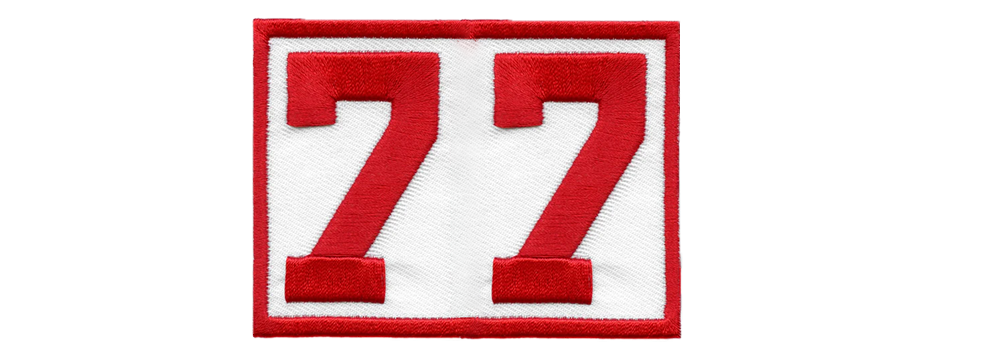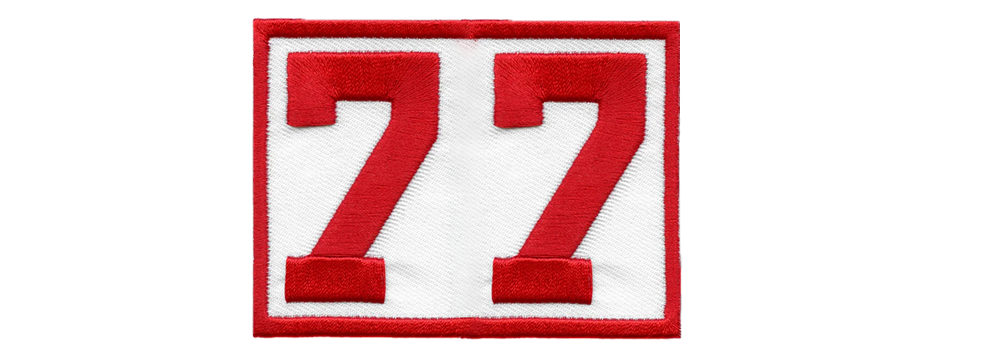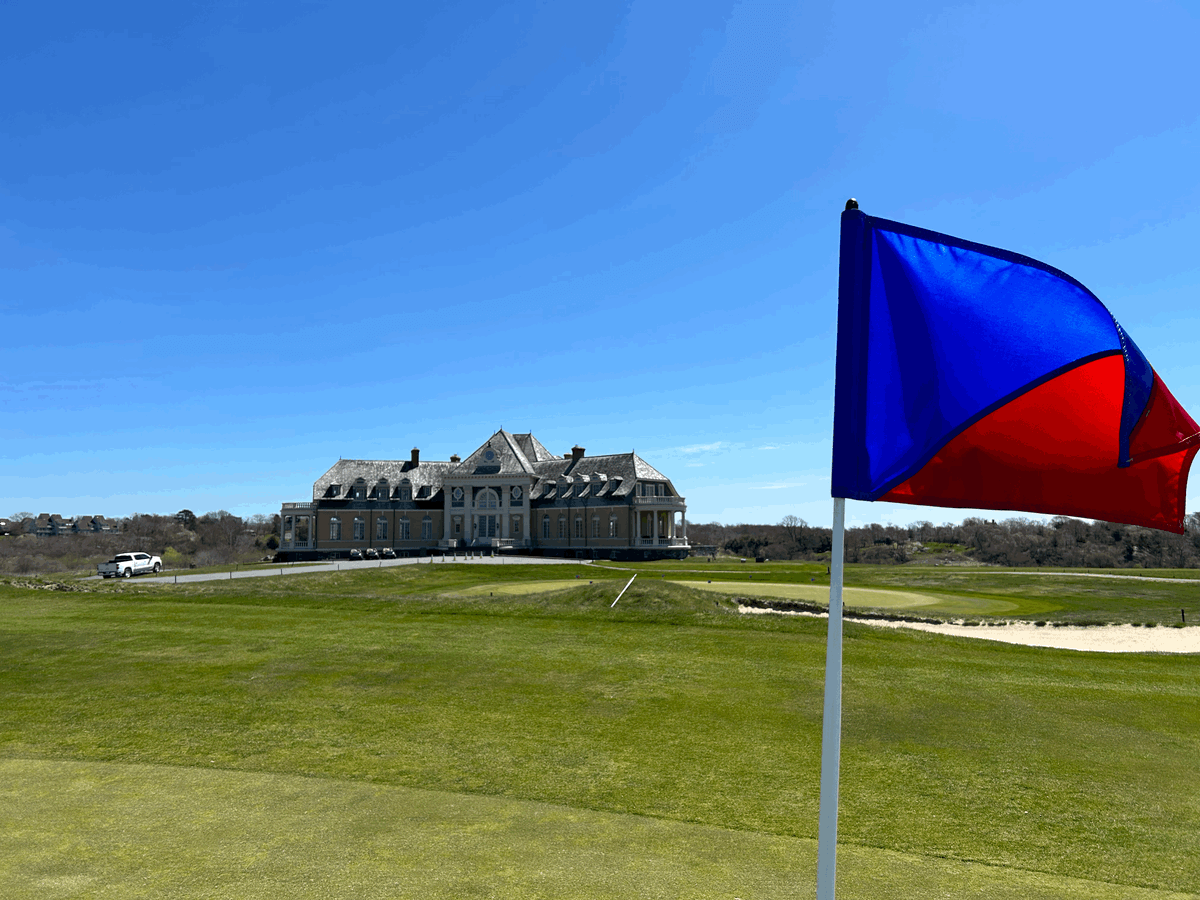Newport Country Club, Shinnecock Hills, The Country Club in Brookline, Chicago Golf Club, and St. Andrew's in New York. All five were the founding clubs of the United States Golf Association, but there is one that is the true birthplace of the USGA's crown jewels. The land in Newport, Rhode Island, overlooking the endless Atlantic Ocean, was where the original Amateur and United States Open would occur. It all came from Theodore Haveymeyer, the sugar tycoon and first president of Newport Country Club, who brought the two events to his personal golfing grounds. Newport's nine holes in 1895 did not stop them from being a part of history. The Amateur championship was held by each player competing in those nine holes twice a day and 36 holes in total for the medal play. Today, over 300 players compete to win the U.S. Am, and thousands more try to qualify to even participate in the event. In 1895, there were 33 entries and 20 players competed, but 11 withdrew because of high score trouble. Charles Blair Macdonald, founder of Chicago Golf Club, would win the Amateur, then named the "United States Championship" title. Macdonald's 12 and 11 victory still has the record for the largest final-round winning margin in U.S. Amateur history.
There is no argument about where the first U.S. Amateur took place, but there is one for the U.S. Open. The "first intended" United States Open would occur at St. Andrews Golf Club in New York, with the Englishman and Shinnecock Hills head pro Willie Dunn beating The Country Club in Brookline's professional Willie Campbell. Due to C.B. Macdonald's frustration regarding status, the event would not be recognized as official. The second or the official first U.S. Open would take place at Newport Country Club, and Macdonald would beat the unlicensed Open "champion" Willie Dunn.
Shinnecock Hills has hosted five U.S. Opens, one Walker Cup, one U.S. Women's Amateur, and one U.S. Amateur. Conversely, Newport Country Club has had just four national USGA championships in its 131-year history, making the lonely four so notable. What makes them stand out is not just the playing of the event but their champions. Arguably the greatest two players in the men's and women's game, Tiger Woods and Annika Sörenstam, have hoisted the winning trophy on the 18th green under the Whitney Warren-designed clubhouse.
Annika did so in 2006 for the U.S. Women's Open and Tiger in 1995 for the U.S. Amateur. The 1995 Amateur showcased what the game of golf and the USGA was like for the last hundred years while also showcasing what it would look like for the next hundred.

Stanford student and economics major Tiger Woods was coming off his collegiate season. His team lost in a playoff to Oklahoma State for the NCAA championship but also won the prior year's U.S. Am at TPC Sawgrass, beating Trip Kuehne in the final. He would play in his first Masters in April and make the cut, but then have to W.D. from the U.S. Open at Shinnecock Hills in mid-June. When it came to late August, Tiger arrived at a dried-out Newport CC, playing great golf all summer and seeing some of the best courses and players the world had to offer.
Wanumetonomy Golf and Country Club and Newport Country Club co-hosted the stroke play for the centennial U.S. Amateur, while Newport Country Club served as the venue for the match play. Tiger would play his first round at Wanumetonomy, which was the easier course during medal play, shooting 68. Justin Roof and Steve Scott, whom Tiger would play in the final next year, shared the co-lead after Day 1. The next day, he faced Newport Country Club and came in seven shots worse, a 75 and a total of 143. Another competitor in the field, Jerry Courville Jr., told me he remembered Tiger being anxious after his second round, "He was worried about 143 missing the cut; I said, 'Tiger, you're going to be fine, 143 will make it.'" Courville, a Connecticut native, played in 18 straight U.S. Amateurs from 1989 to 2003 and won the Mid-Amateur in 1995, right after his playing at Newport. After all the players were finished with 36 holes and the cut was decided, Tiger made it by two shots. Just like his previous Amateur win, he would not win medalist honors, which would be taken by none other than Courville, "I didn't even think I had a chance to win the medal. I remember from that week that the conditions at Newport were very firm and fast. For me, it was hard to putt on the greens because they were a different color." There are no better two words in the language to describe Newport that week than fast and firm. The wind whipped, and the sun was out in full August force leading up to and during the event. Much of the rough and green surrounds were of a light brownish hue, and shots from the fairway produced a small cloud of sand like the summer turf at Carnoustie was transported to the coast of Rhode Island.

The course was firm, but this was how Newport and the USGA wanted it all to play, going back nine years before the event started. Barclay Douglas, the President of Newport Country Club, wrote a letter to David Fay at the USGA in 1986 regarding having the 95th Amateur at Newport. Then, the following year, in 1987, The U.S. Amateur was in Jupiter, Florida, but the Women's Amateur was at Rhode Island Country Club, about 25 miles away from Newport. P.J. Boatright Jr., the former executive director of the USGA at the time, and David Fay, the future director, visited Newport C.C. and met with Douglas. The three went out onto the course and Douglas nervously approached Fay, "I asked David, does [Boatright] like it," Fay said, 'No, he loves it.'" After I talked to David Fay regarding this moment almost 30 years ago, he laughed and remembered something after that conversation happened. "I was walking down one of the fairways with Barclay and he mentioned putting in an automated irrigation system, I immediately told him, 'there is no way you will be getting the Amateur if you do that, it would ruin the place.'" The USGA loved that the centennial U.S. Amateur would take place where it all started and that the course could play to the conditions that the game of golf was made for, molded by the sun and wind from the surf. During the final match, Johnny Miller went as far as to say, "These greens are firm, it is typical links style, they are more like the British Open used to be in the '70s before they put in the automatic sprinkling systems in the old courses, the greens used to be as hard as a rock, I think they have slightly emasculated these courses with softer greens."
When match play came, "the next century's superstar," as Roger Maltbie labeled Tiger that week, would come out of the gates running. In his first round of match play, he beat the reigning Western Amateur Champion, Patrick Lee. Woods would then take down the Texan Chad Campbell 4 & 2, playing 33 holes thus far with only one bogey. Woods, in his next match, would face the 33-year-old Sean Knapp, who, in his previous match, had beat Tiger's great friend and college teammate, Notah Begay. That match would go back and forth, but again, Tiger would move on.
Next was the quarter-finals, and it would not be the last time in Woods' career that he would face a player who was dating/married to his caddy. The Knoxville, Tennessee amateur, Scott Kammann, was coming off multiple winning matches but also a wedding. The previous week before the event, Kamman married his wife-turned-caddy. Kammann would play well early, but Woods, once again, would step on the gas mid-way through and take the match 5 & 3.

After Tigers' once again momentous run, the semi-final would find him in battle against the one man who could almost be as polarizing as him. The 43-year-old Mark Plummer, who sold liquorspirits and was a county sheriff, would be his competition. Plummer possessed a red mustache thicker than the long fescue on the grounds, and he looked like a local New Englander who had been taken out of the crowd. "The fella I was playing with in the morning had me three or four down after eleven holes, and my caddy heard his caddy say, 'Looks like we are going to have Tiger this afternoon.' I went and won the next five holes and closed him out," said Plummer to the N.E. Golf Journal. Plummer's opponent in the quarter-final was correct in that someone was playing Tiger in the afternoon; he was just wrong about who it would be. By this point, Plummer had won eight Maine Amateur titles (today he has thirteen). There were some audible calls from the locals during the first couple of holes for the frisky Plummer. Unlike many who would match up with Tiger over the next 20 years, Plummer was not as phased, "I can't believe how relaxed I was," Plummer told Travis Lazarczyk. "For some reason, I was very calm and just enjoying it. Maybe it was my time." The first nine was very even, and the match was all square through the first 13 holes. Maybe Plummer did have a chance to win the title he had not competed at in 12 years? He would go on to miss the green on the Par 3 14th and lose the hole going one down. After being unable to recover from an errant drive on the next hole, Plummer would go two down. It seemed like the match was nearing an end before the 18th, but the multiple-time Maine Amateur champion won the 16th, shortening Tigers' lead.
Plummer and Woods would take their match to the 18th but Woods would also win that hole finishing the match with a 2 up victory. The only thing that stood in the country sheriff's way of a chance at the greatest trophy in Amateur golf and playing in the majors that year was a wiry 19-year-old from Northern California. Woods would move onto the final and get a step closer to being the first repeat U.S. Am winner since Jay Siegel in 1982 and 1983. The man trying to stop that record was the car dealership owner, George "Buddy" Marucci. Buddy, a lifelong amateur, was 43 years old at the time and went on one of the best runs of his amateur career to make it to the final, including beating Steve Scott, who the world would know exactly a year later with his match-up with Tiger at Pumpkin Ridge. The New York Times would headline its article previewing the Sunday match, "Woods, 19, to Meet Car Dealer, 43, in Final". The crew that accompanied Tiger to the course in Newport consisted of his dad, Earl Woods, the Vietnam vet, who was trying to spread the prophecy of the next great golfer to anyone who would listen. It also included his swing coach Butch Harmon and his psychologist turned caddie for the week Jay Brunza. The entourage of Buddy Marucci comprised just his caddy, wife, and father. Johnny Miller would say of Marucci, "It's a pretty rare occasion when you find a guy in his 40s, got money, and no belly."

Marucci would start the match strong, including a chip on par 3 8th, which would win the hole. Through 12 holes, Buddy possessed a 3-up lead. Some of the thoughts that Trip Kuehne had the year before being 6 up on Woods one year prior must have gone through Marucci's head. Amazingly, Tiger going down against Buddy was the first time all week he was down in a match and they would end the morning 18 with Marucci having a one up lead. The marathon that is the United States Amateur is mentally and physically draining and after winning his match on Saturday, Marucci mentioned that the long week has got to him, "I didn't handle it very well today, I was really tired and I think it showed in the middle of both matches, I got a little sloppy. I don't know how I am going to handle it tomorrow, I am tired physically…I hopefully will be ok." In the second 18, Marucci's fatigue would show, primarily off the tee missing some fairways but his approach and putting play did not suffer. Tiger would start making the putts he struggled to hole earlier in the day and get the match back to all square. With their 190 cc driver heads, Woods would outdrive Marucci by anywhere from 30-45 yards making their playing of Newport seem like they were starting each hole from different tees. When it got to the second playing of the par 4 11th hole, the number of yards from the tee to the bunker-guarded green was 295 yards. After halving the drivable 12th with birdies, Tiger would tee off on the uphill par 3 13th and finish his swing with a helicopter finish looking as disappointed and frustrated as he had been all day. The ball would end up 11 to 12 feet behind the flag, and Tiger would look down and shake his head with a smile, showing some of the emotion he was trained so much to hide.

As the rain started to fall, Marucci put on a Pine Valley hat, making it the third branding of the course in his get-up. Just like amateurs at The Masters, Tiger, for a brief period, would equip the waterproof pullover that looked like it came directly from the course's pro shop, containing the course logo and the championships that Newport has held.

On the fourteenth, while still sporting a one-up lead, Tiger hit a drive 42 yards past Marucci. They would halve fourteen, and on the fifteenth, the two would both have putts for birdie. Maruccis had a left-to-right 25-30 footer and would leave it just short. Like so many times in his young experience career, Tiger was left with a putt that could considerably weaken his opponent's chances late in the day. About a 16 footer, he lined up about two feet left of the hole, took three looks at his line and the hole, stroked the putt, and watched it swing dead center into the hole with his putter raised in the air and his fist swinging in his distinct uppercut fist pump. Buddy would follow that by winning the next hole, and as they walked to the next tee, a fan said loudly, "Marucci, you're still alive!"
The hole that would decide the 100th U.S. Amateur was the par 4, 384 yard par 4th 18th that finished at the back of the clubhouse. Marucci hit his driver through the firm fairway into the first cut on the right. Woods ripped a 2 iron draw fitting the right-to-left slanting fairway shape. Marucci would come to his ball, 165 yards away from the pin and find it resting in a small dip in the ground and make his slaying of the cat almost impossible at this point. 150 yards, an eight iron, "it wouldn't surprise me if he knocked this a foot from the hole," said Johnny Miller on the broadcast. Tigers 8 iron and ball listened to Miller and spun back behind the hole to about 16 inches. Walking up the green where the crowds followed behind, Marucci gave Woods an early shake of hands.

Tiger Woods raised the Havemeyer Trophy three times in his life, a true testament to his career. Named after the man who brought USGA events to Newport, this trophy symbolizes the beginning of national testing for amateurs and professionals in the United States. If Newport Country Club does not host another national championship after its hosting of the U.S. Senior Open in 2024, it shall never be forgotten.

Thank you to the USGA and Barclay Douglas for his help with this piece and all he has done for the game of golf.
Pictures from my visit to Newport Country Club and Sports Illustrated.


